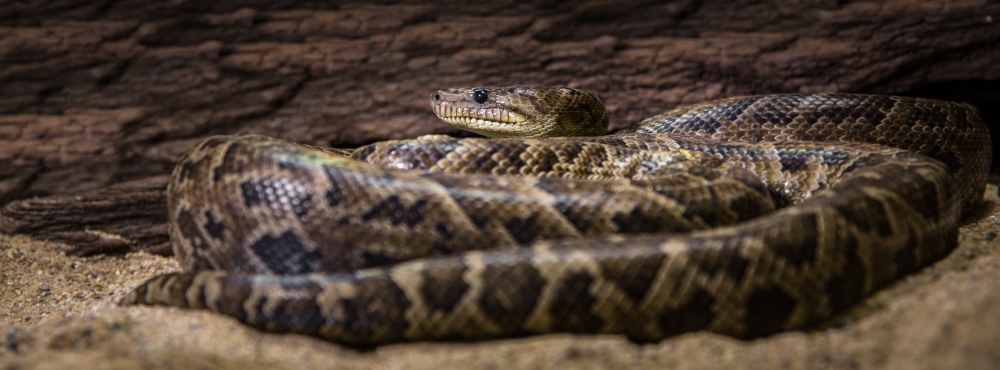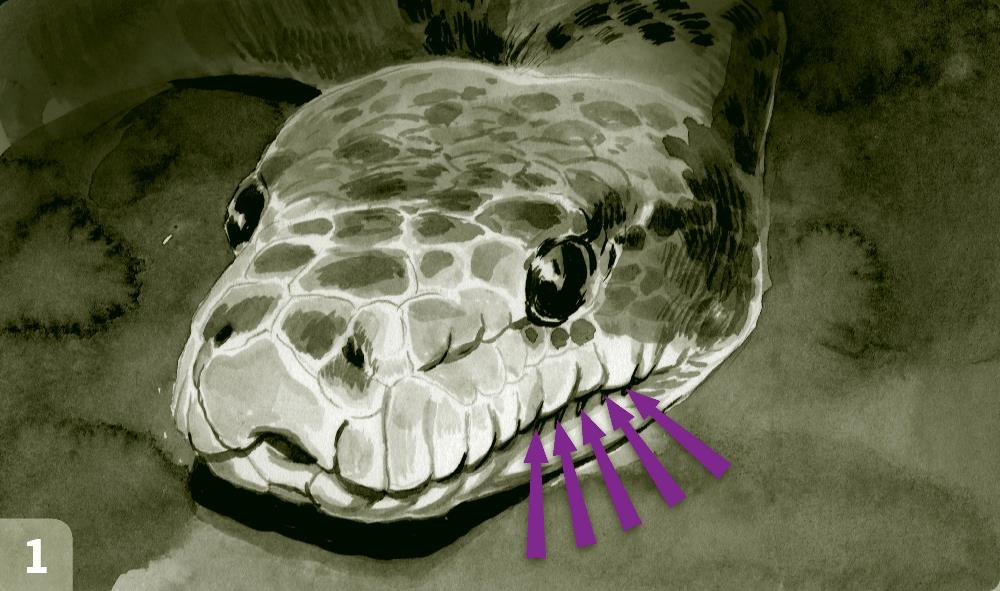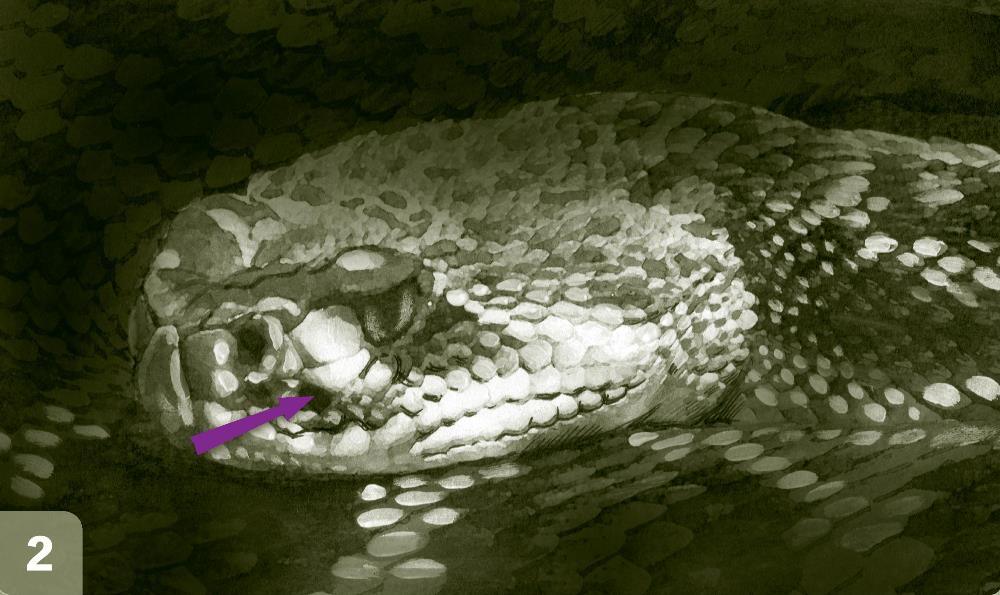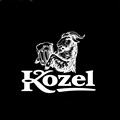Kdo "vidí" teplo

Někteří hadi lovící savce a ptáky uplatňují zvláštní druh "nočního vidění". Pomocí receptorů umístěných v jamkách na hlavě vnímají tělesné teplo své kořisti.
Some snakes that hunt mammals and birds use a special kind of "night vision". Using receptors located in the pits on their head, they can detect their prey´s body heat.

HROZNÝŠOVITÍ HADI - konkrétně krajty a někteří hroznýši a hroznýšovci, kteří loví rychle létající kořist - mají řadu mělkých tepločivných jamek podél čelisti. Toto umístění zajišťuje hadům dobrý "rozhled" do stran. Dříve si tak všinou ptáka či netopýra letícího kolem a stihnou včas podniknout výpad.
BOIDS - specifically pythons and some boas that hunt swiftly flying prey - have a row of shallow, heat-sensitive pits along the jaw. Being located here ensure the snakes have a good "view" to the sides. It allows them to pick up a bird or bat flying around them and lunge for them in time.

CHŘESTÝŠOVITÍ HADI - tedy nejen chřestýši, ale i třeba křovináři, mají jen dvě tepločivné jamky pod nozdrami, zato hlubší a citlivější. Umožňují vnímat změny teploty v řádu 0,2 °C a přesně zaměřit zdroj tepla. Poskytují hadovi prostorový obraz okolí a více než dobře mu nahrazují zrak.
PIT VIPERS - including rattlesnakes, have just two heat-sensitive pits under the nostrils, but they are deeper and more sensitive. The snake can detect a 0,2 °C change in temperature and accurately fix on the heat source. This means the snake has a spatial image of the surroundings that easily substitutes for vision.
ZOOPRAHA.CZ
Zvířata a expozice
- Lexikon zvířat
- Pomáháme jim přežít
- Kam v zoo
- Expozice mimo areál zoo
- Zoo v číslech
- Zvířecí osobnosti
- Zvířata se učí
Multimédia
Kontakt
- Zoologická zahrada hl. m. Prahy
U Trojského zámku 120/3
171 00 Praha 7
Tel.: +420 296 112 230
Datová schránka ID: es6fem5
e-mail: pr@zoopraha.cz
Press
Partneři Zoo Praha
Ostatní










